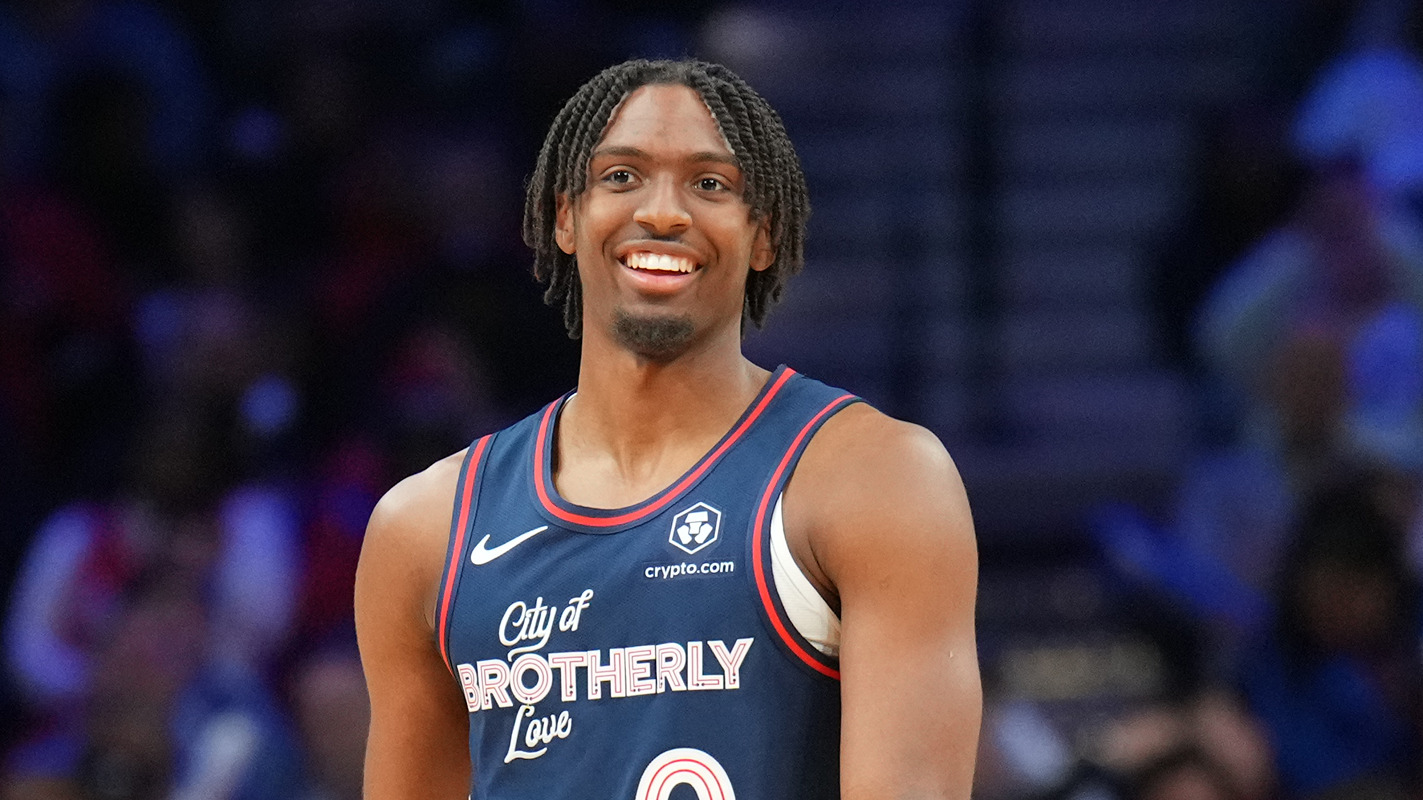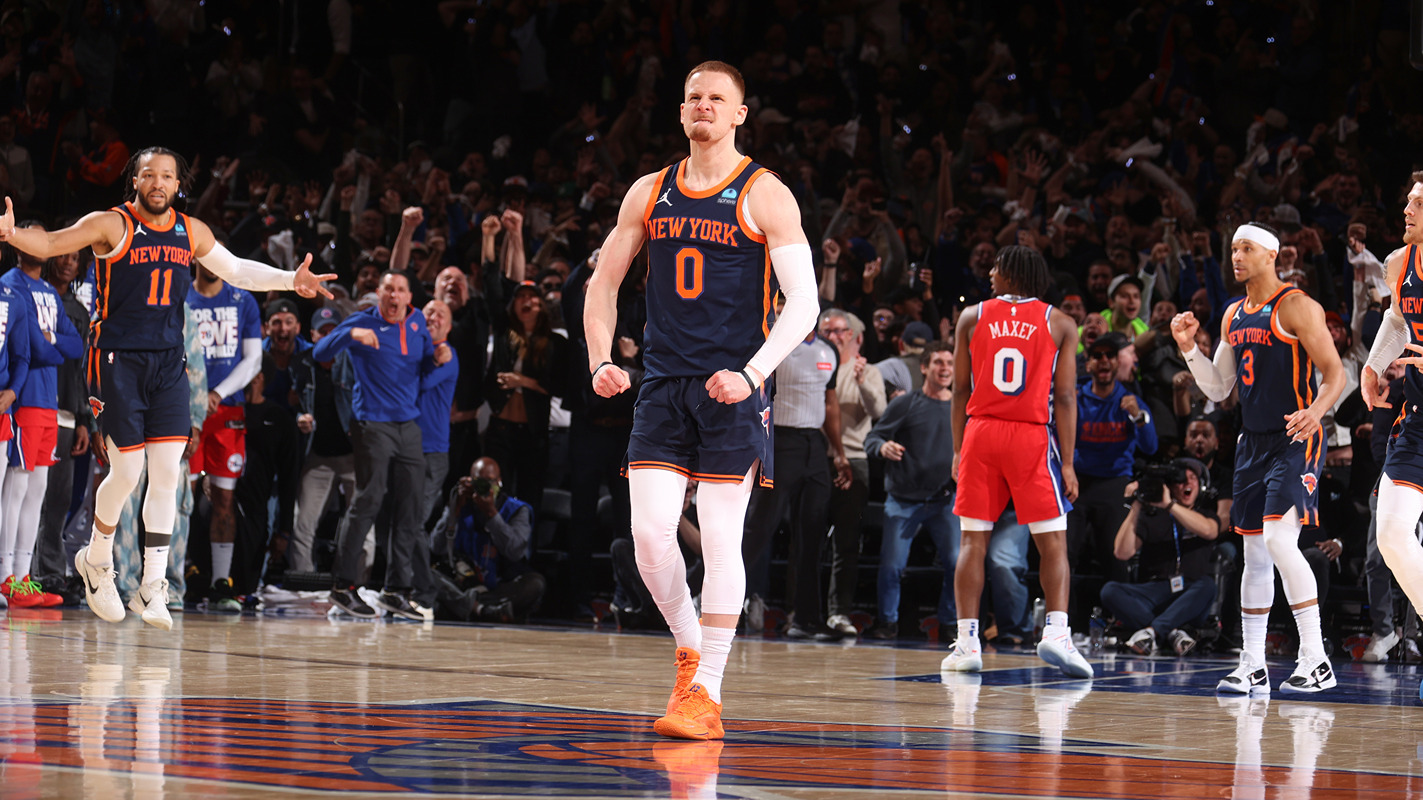The Sixers traded for the first pick in the NBA draft, and Markelle Fultz will join Joel Embiid, Dario Saric and Ben Simmons to form arguably the most exciting young nucleus in pro basketball. Yet, four years after it started, people are still talking about this concept known as "The Process." Did it work? Is it premature to celebrate? Was Sam Hinkie right all along?
Worse still, I'm quite certain nobody knows what "The Process" is at this point. Because it was a lot of things to a lot of people, but it was never "lose and collect assets until a championship occurs organically, without spending in free agency or actively improving the roster through means other than winning the No. 1 pick through the draft lottery."
For far too long, The Process has been bastardized and perverted by its detractors. The rebuilding of a non-playoff team took too much time for some tastes, though Sam Hinkie – allowed two-and-a-half years, officially – inherited an NBA franchise with zero stars, no money or draw for free agents, and missing multiple first-round picks. You would think the Sixers were the first team in professional sports to tank for multiple years based on the criticism, which always conveniently forgot or ignored the multiple teams obviously doing the same in any sport at any given moment.
So "Trust The Process" became a defense mechanism of sorts for supporters. At the same time, the phrase was appropriated by a bunch of used-car salesmen who turned it into a cheap merchandising ploy for T-shirts and hashtags. It wasn't the Sixers who flaunted how bad they were to the rest of the league. It was the portion of the fan base that realized the game is rigged to some extent, and more losing now theoretically leads to far greater winning in the future – so until then, just have fun with being one of the worst organizations in sports.
Philadelphia 76ers
Complete coverage of the Philadelphia 76ers and their rivals in the NBA from NBC Sports Philadelphia.
Both sides lost their minds along the way. There was never anything special or unique going on with the Sixers under Hinkie. The Process was the exact same thing every team eventually goes through in professional sports. It amounted to, "We suck, we're not going to be remotely good anytime soon no matter what we do, so how do we maximize this period of awfulness to come out best on the other end?"
There was nothing enjoyable about The Process, either. Hinkie let things get so bad, the Sixers had to endure a 10-win season, one of the worst in NBA history. It turns out critics were right about the negative consequences to keeping no meaningful veterans on the roster – see Jahlil Okafor swinging on people in the streets of Boston. And a GM adept at acquiring assets isn't necessarily brilliant when it comes to talent evaluation and fostering working business relationships – see Okafor over Kristaps Porzingis in the 2015 draft.
The Process was a rebuild, plain and simple. That's it. Hinkie screwed up along the way, certain elements of The Process were mismanaged in hindsight, and it rightfully cost him his job. Also, when assessing the situation honestly, the Sixers didn't have any choice but to rebuild, and the moves that prolonged the rebuild were the right ones to make. About the only aspect of The Process that was different from other rebuilds was Hinkie admitting the Sixers' goal in a given season might be something other than winning as many games as possible.
Did the Sixers' rebuilding mode go to extremes when Hinkie was general manager? It certainly appeared that way on occasion. Was more made of it because the Hinkie was open about the fact that Sixers management wasn't worried about winning as many games as possible in the immediate or short-term future? Definitely.
When Hinkie took over, the Sixers were a 34-win team that missed the playoffs, had salary-cap issues, couldn't draw a star in free agency anyway, and was without two of its first. Knowing that, who wouldn't have traded Jrue Holiday – the team's "best" player – for Nerlens Noel with a torn ACL and a first-round pick, even while setting the Sixers up for an 18-win season? Having seen what a transformational player Joel Embiid, who wouldn't take him with the No. 3 pick in the following year's draft, even knowing he would miss two full seasons due to injury? And after watching Michael Carter-Williams' regression from Rookie of the Year to fringe NBA talent, who wouldn't have pulled the trigger on a first-round choice that has yet to convey, but proved to be a key piece in landing Fultz? Those were the three biggest decisions during the course of The Process.
Anybody who tells you the Sixers drafted certain players because they were injured (especially) or committed overseas is a nutjob. And anybody who thinks the Sixers should prolong the rebuilding for as long as possible to guarantee "The Process" is successful is also missing the point, which was to assemble a championship-caliber team. Four years after Hinkie started, that finally appears possible.
Somehow, the result of that outcome is senseless squabbling over whether Hinkie was right or wrong. There is also an assumption that how he operated the franchise for the first two years – when the situation was its bleakest – might hint at his prevailing tendencies for the next decade, as if he would never pull the trigger on a move up to get Fultz or wouldn't try to add a quality free agent to this core. It's such a silly mindset to truly believe that all Hinkie wanted to do is tear something down and would never, when the time was right, as it is right now for the Sixers, try to build it back up.
The Process wasn't simply about losing and acquiring assets. It was making smart decisions, no matter what they meant in the immediate – decisions every pro sports team eventually must make, if not every year. Hinkie made some of the most influential decisions that put the Sixers in this situation, and deserves some credit for that. And Hinkie was also a flawed GM who made some decisions that ranged from shortsighted to terrible, and deserved what happened to him as a result of that as well.
Hinkie was right and he was wrong. The Process itself was neither. It was nothing more than branding for a necessary, painful rebuild.
I supported the Sixers' rebuild from the beginning – and not because some supposed Silicon Valley prophet saw the future. The organization literally had no other option but to rebuild. It wasn't even Hinkie's doing. It was Doug Collins' and Tony DiLeo's, for checking off on the Andrew Bynum trade that gutted the roster and dispatched of yet another draft pick. To some extent, it was Ed Stefanski and Billy King for letting the franchise get to such a sad state in the first place.
The Sixers had no other path to restore prestige to the franchise besides dismantling the few parts that were left and rebuilding in the draft. Hinkie recognized that, was honest about his plan, and open to the harsh reality it would take time, more than some people were willing to wait. That was The Process – not tanking, not prolonging the rebuild, not anything unusual at all – and if it didn't end with the selection of Simmons last year, it certainly came to a conclusion with the move up for Fultz.



